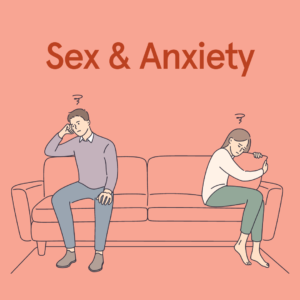Eating disorders affect a person’s physical and psychological functioning differently than any other mental health disorder. Once thought to be a problem of the wealthy, eating disorders are now known to impact various cultures, socioeconomic statuses, ages, and genders, and can be found worldwide.
The Diagnostic and Statistical Manual of Mental Disorders, Fifth Edition (DSM-5) characterizes people with eating disorders as having “pathological eating habits and a tendency to overestimate their weight and body shape.” Eating disorders are not to be taken lightly: patients with an eating disorder faces a high risk of medical and psychological effects, along with the possibility of death if their condition becomes severe enough.
Eating disorders are also more common than you might think. In fact, a 2007 survey by Hudson, et al., noted that about 1.5% of American women (0.5% of men) experience bulimia nervosa, about 0.9% of women (0.3% of men) have been diagnosed with anorexia nervosa, and roughly 3.5% of women (2% of men) struggle with binge eating disorder.
Until recently, eating disorders have been treated mainly through cognitive behavioral therapy (CBT). New advances in the emerging field of virtual reality therapy (VRT), however, are being combined with traditional therapy and show promise for more effective treatment.
How Does VRT Work?
Virtual reality therapy is a high tech approach to helping people learn effective ways to cope with the fearful situations they dread. During VRT, you wear a virtual reality headset that looks similar to the type you’d use when playing video games. The therapist plays a simulation program that displays avatars in a variety of anxiety-provoking settings, such as in a restaurant or a store dressing room for those with an eating disorder. These settings are low stress to begin with, then stress levels are increased as you become more desensitized to the worrisome scenario. You use a virtual “body” during VRT. Although this avatar isn’t really “you”, studies show that people feel a close enough association to the avatar that they emotionally respond as if they were in the actual setting. In this way, they can address their eating disorder and work through their body-image issues in a safe, controlled environment. The psychologist listens in during the session to coach, help with relaxation techniques and provide coping skills. They also can control the environment and either stop the program or lower the stress level if you become too upset.How Effective is VRT for Eating Disorders?
Virtual reality exposure therapy gives people an experience that is just real enough to trigger an emotional response to their eating disorder, but is it effective? In 2017, DeCarvalho, et. al., did a systematic review of several studies that used virtual reality therapy for binge eating and bulimia nervosa (BN) treatment. One of the studies they analyzed was done by Perpina, et. al., and focused on treatment with a combination of VRT and cognitive behavioral therapy (CBT) versus treatment with CBT alone. The study found that the “VR treatment group showed more BI [body image] improvement than CBT and greater improvement in the behavior clinical measures. At post-treatment, the VR group improved on body attitudes, frequency of negative automatic thoughts on BI, body satisfaction, discomfort caused by body-related situations and BN symptoms (measured by Bulimic Investigatory Test; BITE). These results were maintained or continued to improve (body attitudes, frequency of negative automatic thoughts on BI) at one-year follow-up.” All participants improved in the eating disorders measures and it was also maintained at follow-up. In a different study, a body-swapping illusion was used in conjunction with virtual reality. Women with body image anxiety were asked to estimate their own body size before participating in two different body-swapping scenarios. In both illusions, the women were shown a virtual image of themselves with skinny stomachs. The theory was that it may be possible to modify a person’s allocentric memory (a type of spatial memory in which the person mentally manipulates objects from a stationary point of view) for the positive. Indeed, after going through the virtual scenarios, the women in the study reported a decreased estimated body measurement and assessed their body size more accurately than before participating in the illusion.Get Help for Eating Disorders
Eating disorders impact a person’s biological and psychological functioning in ways unlike other mental health disorders. If you are struggling, we can help through both traditional and virtual reality therapies. Talk to the mental health professionals at The Center for Treatment of Anxiety and Mood Disorders in Delray Beach, Florida today. For more information, contact us or call us today at 561-496-1094.Reference:
Hudson JI, Hiripi E, Pope HG, Kessler RC. The prevalence and correlates of eating disorders in the National Comorbidity Survey Replication. Biol Psychiatry. 2007 Feb 01;61(3):348–58. doi: 10.1016/j.biopsych.2006.03.040. http://europepmc.org/abstract/MED/16815322. [PMC free article] [PubMed] [Cross Ref] De Carvalho, M. R., Dias, T. R. de S., Duchesne, M., Nardi, A. E., & Appolinario, J. C. (2017). Virtual Reality as a Promising Strategy in the Assessment and Treatment of Bulimia Nervosa and Binge Eating Disorder: A Systematic Review. Behavioral Sciences, 7(3), 43. http://doi.org/10.3390/bs7030043Dr. Andrew Rosen
Dr. Andrew Rosen PHD, ABPP, FAACP is a Board-Certified Psychologist and the Founder and Director of The Center for Treatment of Anxiety and Mood Disorders, as well as, the Founder of The Children’s Center for Psychiatry Psychology and Related Services.





